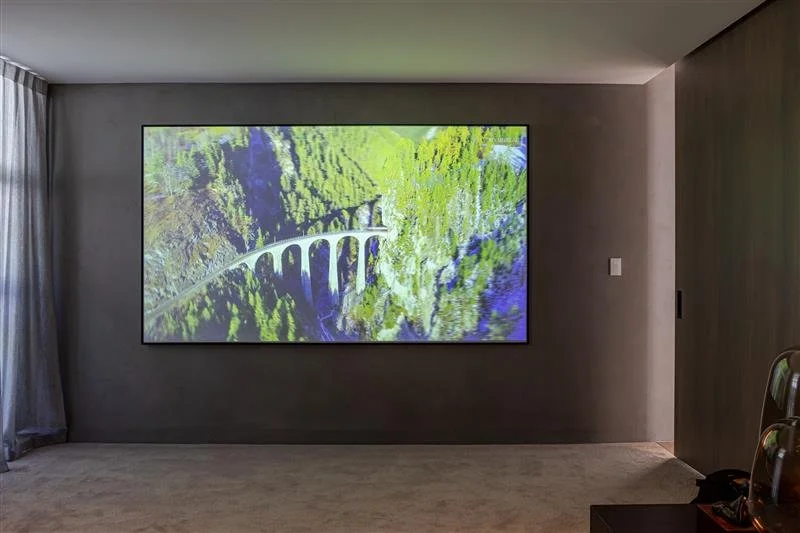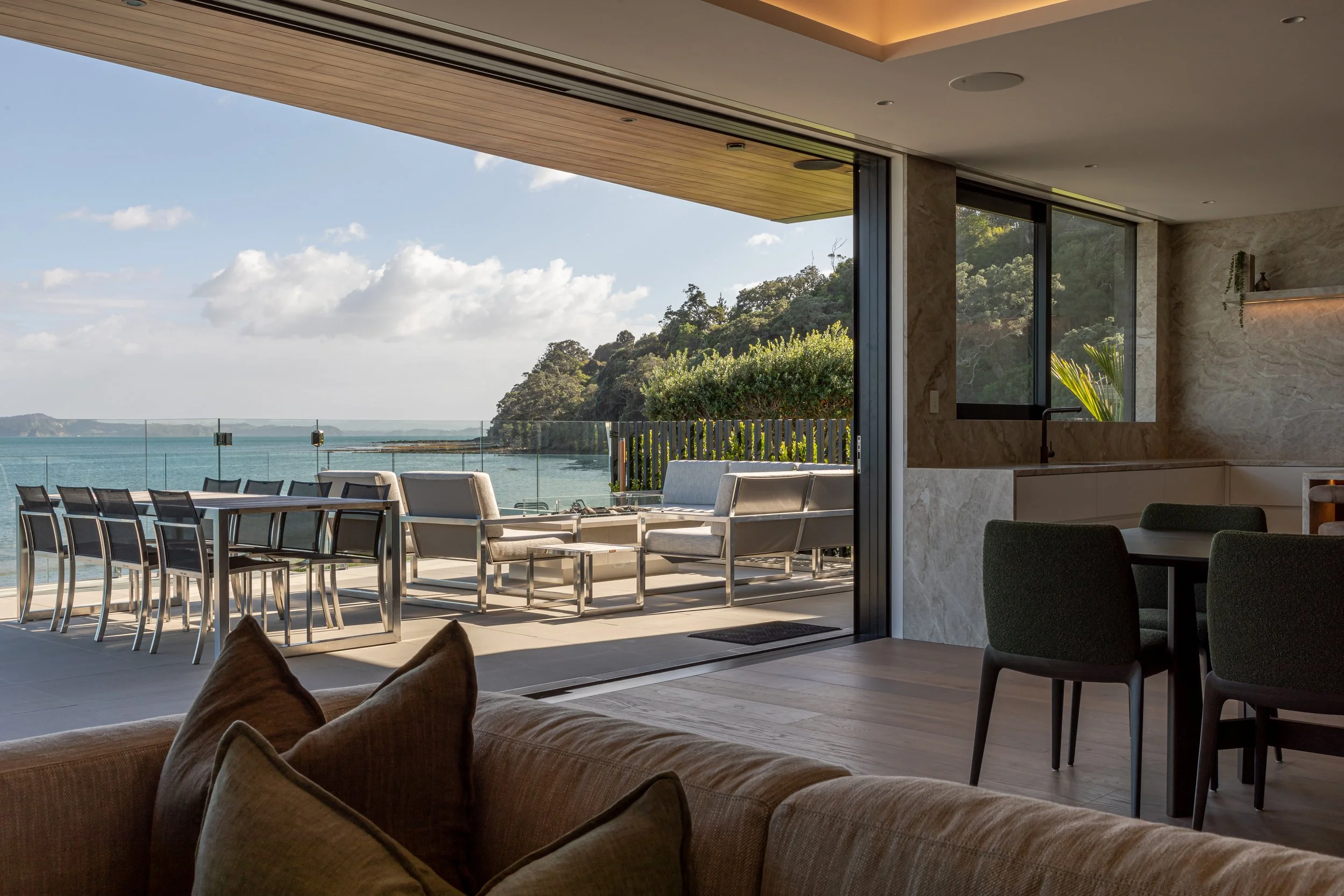Control System
Unified Crestron UI deployed across TSW-1070 (10”) and TSW-770 (7”) wall-mounted touch panels and TSR-310 handheld remotes. The interface provides consistent, room-centric control and status for A/V, Security, Access Control, CCTV, Lighting, Access Control and defined services. Navigation is streamlined (Home → Rooms → Subsystem tabs), with fast access to global scenes and alerts, and real-time source usage/status via the Liquid Priority Control logic.
Key Features & Benefits
Global Apple TV’s - Simplifies login management for every TV location, allowing each user to have a personal Apple TV with their own accounts accessible anywhere in the house.
Live Status & Feedback — Status for doors, window and sump pumps.
Touchpanel DND - Simple selection to disable intercom calling to particular touch panels.
Scene & Mode Control — Global functions (e.g., Welcome/Goodbye/Away) coordinate lighting and relevant subsystems per project policy.
Alerting & Notifications — On-panel popups and email notifications for defined events (e.g., pump faults, alarms, device health).
Carbon monoxide monitoring (Garage) with variable-speed extraction control.
After-care support with monitoring and a proactive service.Consistent Navigation Model — Standard page structure across all panels/remotes for minimal training and predictable operation.
Alerts & Notifications — Pop-ups for defined events (e.g., security alarms, pump faults); optional email forwarding to nominated recipients.
User Roles & Safeguards — Role-based page visibility, panel PIN locks for sensitive actions, and session timeouts per security policy.
Video Distribution — Crestron DM NVX
Overview
AV-over-IP backbone using DM NVX encoders/decoders to move video and embedded audio over the network. Supports up to 4K/60, 4:4:4, HDR, HDCP 2.3, with multichannel audio transport and downmix to stereo where required.
Equipment / Endpoints
Encoders (TX) for sources: Sky Decoders and global Apple TV’s, CCTV mosaic.
Decoders (RX) to displays: Living, Patio, Scullery, Media Room, Study, Master Bedroom TV/Library, Workshop/Tackle Room.
Key Features & Benefits
4K/60 4:4:4 HDR Transport — Visually lossless distribution with HDCP 2.3 compliance.
Integrated Multichannel Audio — Carries Dolby TrueHD/Atmos, DTS-HD/DTS:X, and LPCM; supports stereo downmix where needed.
Network-Native Switching — Matrix any source to any display over the LAN; no long HDMI runs.
Scalable Architecture — Add encoders/decoders without re-engineering a fixed matrix.
Low Latency — Real-time viewing suitable for UI feedback and live sources.
Centralised Management — Unified provisioning/monitoring of endpoints, firmware, and EDID.
Serviceability — PoE powering, remote diagnostics, and predictable QoS/VLAN segregation.
Audio Distribution — Crestron DM-NAX
Networked multiroom audio using DM-NAX amplifiers with built-in AirPlay 2 and Spotify Connect (independent media player per zone).
Audio zones: Living, Kitchen, Patio, Scullery, Laundry, Sewing Room, TV/Library, Master Bedroom, Master Wardrobe & Ensuite, Bedroom 1, Bedroom 2, Bedroom 3, Study, Garage, Cellar, Workshop/Tackle Room and Theater.
Key Features & Benefits.
Per-Zone Streaming — Native AirPlay 2 & Spotify Connect with a dedicated player per stereo zone.
High Output Power — 150 W/ch @ 8 Ω, 300 W/ch @ 4 Ω; bridgeable up to 500 W/ch for high-demand speakers.
Digital End-to-End Path — Audio stays on the network from source to amp, minimising hum/ground issues and converters.
Tight NVX Integration — Embedded audio from video sources routes directly to zones over IP.
Scalable & Serviceable — Add zones/chassis without re-cabling; remote monitoring and firmware updates.
Centralised Control — Unified source selection, grouping, and level management across all areas.
Reduced Failure Points — Fewer analogue interconnects and breakouts; simplified rack wiring.
Lighting Integration
The Lutron lighting system has been included throughout the whole house and integrated directly with the Crestron control.
Key Features & Benefits.
light switches - Control of third party window treatments.
Global scenes - Allow for setting all common areas with the touch of a button for example Entertaining will set up entrance and garden scenes as well as all interior entertaining zones.
Security interface - Arm / Disarming trigger lighting / Window and automation behaviours (e.g. Arming : closes blinds & lighting playback of random weekly use in selected publically viewable areas when armed).
House off -Button next to the master bed ,Garage and front door turns entire house off with a push and hold.
CCTV System
A professional IP video platform using low-light (Starlight) cameras, an NX Witness VMS for live view/playback/analytics, PoE switching, and RAID-protected recording. Engineered for continuous operation, the system delivers clear images in all lighting conditions, fast incident review, and secure remote access via touch panels, desktop, and mobile clients.
Key Features & Benefits.
Starlight Low-Light Imaging & WDR — Maintains colour detail at very low lux; IR-assisted monochrome at zero-lux where required.
Facial Recognition & Smart Analytics — (Where enabled) face recognition, person/vehicle classification, line-cross/intrusion, and tamper alerts for proactive detection.
4K-Ready Capture — Up to 8MP per camera with project-specific FPS/bitrate profiles for evidential clarity and effective digital zoom.
Reliable Recording & Retention — RAID-protected NVR/server with continuous and event-based recording; storage sized to the agreed retention period and monitored for health.
Fast Search & Review — NX Witness smart timelines, filters, and multi-camera synchronised playback reduce investigation time.
Hardened Network Architecture — PoE/PoE+ endpoints on a dedicated CCTV VLAN, encrypted management (HTTPS), UPS-backed core, and remote power-cycle of cameras.
Mobile App -Search video and view live footage directly from a mobile app.
Access Control & Intercom
ICT access control with multi-credential readers and intergrated intercom at the pedestrian gate. Electronic strikes/V-locks on controlled doors and gates. Users are provisioned with per-door/time schedules, and calls route to in-home touch panels and the mobile app for two-way audio/video and remote release. Areas covered - Front Door, Garage, Laundry, Driveway Vehicle Gate, Pedestrian gate, Basement Lift Lobby, Beach Entry Gate, Patio Entry Gate.
Key Features & Benefits.
Multi-Credential Entry — PIN, RFID card/fob, and mobile (BLE/NFC) for Gate and door access
Facial Recognition - Walk up to the front gate and the door will unlock as soon as the camera sees you.
Configurable Call Routing — Gate intercom calls selected touch panels and/or the mobile app; per-panel enable/disable via on-device setup menu.
Granular Permissions & Schedules — Per-user, per-door/gate access windows (e.g., contractor hours) with expiry dates for temporary users.
Hardware Integration — Electronic strikes and V-locks with fail-safe/fail-secure configuration; door position sensors and REX for compliant egress.
Remote Answer & Release — Two-way AV from anywhere with internet access; secure remote door/gate unlock.
Audit & Event Logging — Access attempts, granted/denied events, and intercom snapshots recorded with exportable logs.
Hardened Deployment — UPS-backed controllers, encrypted management, and VLAN segmentation for security and resilience.
Network Infrastructure
The network infrastructure forms the primary communication backbone for all automation, AV, and security systems within the property. It comprises an enterprise-grade wired and wireless network, integrated with dedicated equipment racking, power protection, and remote monitoring systems to ensure stable operation, scalability, and ease of maintenance.
Wireless Network
The Ruckus wireless system is based on Wi-Fi 6 technology, designed to provide high-performance, low-latency coverage across the entire property. Access points are strategically positioned to maintain seamless handover between units, ensuring uninterrupted connectivity for mobile devices and control interfaces.
The system supports concurrent operation at 2.4 GHz and 5 GHz, enabling efficient load balancing and ensuring device compatibility. Centralised management software provides configuration, performance tracking, and diagnostics through a single interface.
Technical Features:
Wi-Fi 6 (802.11ax) compliance
Seamless roaming and handover
Dual-band operation (2.4 GHz / 5 GHz)
1200 Mbps (5 GHz) and 574 Mbps (2.4 GHz) throughput per AP
Secure WPA3 encryption and network segmentation
Centralised WLAN management
Wired Network
The wired network provides the foundation for all data, automation, and AV traffic. It is designed around enterprise-grade managed PoE switches, supporting high-bandwidth communication between processors, distribution equipment, and control devices.
A remote monitoring appliance is installed on the network to perform automated system health checks. It reports device connectivity, latency, and operational status to Liquid Automation’s support dashboard for proactive maintenance.
Technical Features:
Enterprise-grade gigabit/10-gigabit backbone
Layer 2/3 managed PoE switches
PoE functionality enables direct device powering, remote reboot, and centralised current monitoring.
Continuous device monitoring and alerting system
Security System
ICT intruder alarm with Crestron UI integration for arming partitions, zone status, and floor-plan visualisation. Discreet reed contacts at entry points and recessed curtain PIRs provide detection. System supports day/night arming, event logging, and redundant paths to the monitoring station. Interconnected smoke/heat alarms are specified to NZS 4514:2021.
Key Features & Benefits.
Crestron UI Integration — Arm/disarm partitions, view live door/window status, and see PIR activity per room across wall-mounted touch panels.
Perimeter/Night-Arm Mode — Arms doors/windows while allowing internal movement; entry/exit delays and zone bypass supported for practical nighttime use.
Discrete Sensing Hardware — Magnetic contacts on all nominated doors/windows; ceiling/wall recessed curtain PIRs for corridor/perimeter movement; tamper and EOL supervision.
Fire Alarm Compliance (NZS 4514:2021) — Interconnected smoke/heat alarms (10-year sealed battery or 230/240 V mains), hush/test buttons.
Automation Scenes (Security-Driven) — Arm / Disarm modes trigger lighting / Window and automation behaviours (e.g., closing blinds & lighting playback of random weekly use in selected areas when armed).
Redundant Communications — Dual/triple path to monitoring via analogue PSTN, IP, and cellular; automated reporting on alarms, tampers, power, and communication faults.
User & Audit Management — Local web interface for password changes, user/code administration & event history.
Wireless key-chain remotes to arm/disarm the security system and control the vehicle gate and garage door.
Equipment Racking & Power Protection
All network and control components are installed within custom racks. These racks are pre-engineered for efficient cable management, serviceability, and ventilation.
Each rack includes an online UPS system providing clean, regulated power to connected devices, reducing the risk of voltage fluctuations and power loss. IP-controlled power distribution units (PDUs) allow remote equipment reboot and power cycle management.
Thermal monitoring is achieved via Crestron temperature and humidity sensors integrated into the control system. Threshold alerts are configured to trigger warnings and automated shutdowns in the event of overheating.
Tindalls
Project Location: Auckland, New Zealand
Liquid Automation completed a major technology integration for the Tindalls’ residence in Auckland, NZ.

















